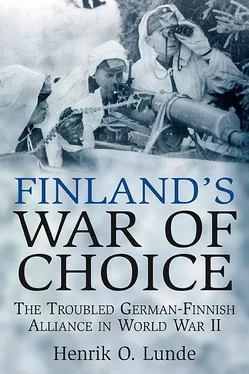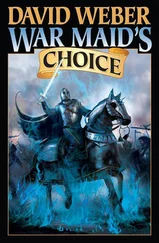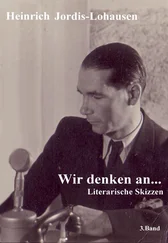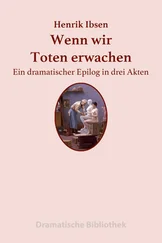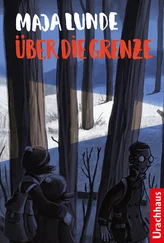11. Ziemke, The German Northern Theater of Operations, p.169.
12. This after-the-fact assessment may be right but it should be remembered that it was weakening Soviet resistance in Group J’s sector that led to its reinforcement with one regiment and an artillery battalion from SS Division Nord and General Siilasvuo himself contributed to the strengthening of this group by taking two battalions away from Group F. Both groups were fought to a standstill by the Soviets. The Army of Norway order stopping Group F’s offensive came after that unit’s offensive had bogged down. There may have been a difference between the Finns and the Germans as to which group should constitute the main effort but at least as late as the end of July there seems to have been a consensus that it should be with Group J.
13. Ziemke, The German Northern Theater of Operations, p.174.
14. The Soviets threatened the whole XXXVI Corps on September 15 when they briefly recaptured Hill 366.
15. Ziemke, The German Northern Theater of Operations, p.176.
16. Trevor-Roper, op. cit., pp.155–159.
17. Bellamy, op. cit., p.277.
18. Trevor-Roper, op. cit., pp.159–163.
19. Ziemke, The German Northern Theater of Operations, p.179.
20. Erfurth, The Last Finnish War, pp.44, 47.
21. Mannerheim, Memoirs, pp.432–433.
22. Wuorinen, op. cit., pp.136–137.
23. Ibid, p.137.
24. Bellamy, op. cit., p.269.
25. Ziemke, The German Northern Theater of Operations, p.185.
26. Jukka Juutinen provided the following translation of a passage from Juri Kilin and Ari Raunio’s article Sodan taisteluja 2: Jatkosota, pp.12–13: “On February 5, 1940, the central committee of the Soviet Communist Party and the Soviet government approved the decision to lay an additional railway to the Kirov [Murmansk] railway…. The Belomorsk–Obozersk railway that was to be of decisive importance to the end result of the Great Patriotic War was being constructed with the forces of the NKVD Gulag of Belomorsk. In July 1940 about 60,000 prisoners worked on the site. According to the report the railway was temporarily opened on December 28, 1940, that is 2 days before the completion deadline. After reporting having finished the work NKVD opened a railway that was basically unfit for traffic, a railroad which wasn’t fully operational until over a half year later in the summer of 1941.”
27. Waldemar Erfurth, Surprise. Translated by Dr. Stefan T. Possony and Daniel Vilfroy (Harrisburg, Pennsylvania: Military Service Publishing Company, 1943), p.5.
28. Erfurth, Problemet Murmanbanan, p.14.
29. Ziemke, The German Northern Theater of Operations, p.187.
30. Erfurth, Problemet Murmanbanan, pp.5–6.
1. This would be the equivalent of the United States today mobilizing 45,000,000 individuals for its armed forces.
2. Mannerheim, Memoirs, p.416.
3. Mannerheim, Memoirs, p.417.
4. This is also the impression given by Vehviläinen, op. cit., p.93, in 2002. He does not mention that German sources tell a different story.
5. Erfurth, The Last Finnish War, p.20.
6. Ibid, pp.20–21.
7. Hölter, op. cit., p.16.
8. Westerlund, op. cit., pp.72–73. There is disagreement in the sources as to the location of the 10th Finnish Division. Westerlund has it located as a reserve behind corps IV and II. Colonel K. J. Mikola, Finland’s Wars During World War II (1939–1945), p.XXIII, locates it behind II Corps. Ziemke, The German Northern Theater of Operations, p.189, and Erfurth, The Last Finnish War, p.23, has it as part of IV Corps. Ari Raunio, op. cit., p.117, appears to give the 10th Division a separate sector between IV Corps and II Corps, under V Corps. The explanation may be that these sources depict the location of the division at different times leading up to the offensives.
9. The Jäger brigades were highly mobile light infantry units ideally suited for the heavily forested areas in Finland. Their functions were those that are normally performed by armored cavalry regiments in more open country. The Germans were very impressed by these units and General Falkenhorst repeatedly tried to have one of the brigades assigned to the Army of Norway.
10. Original plans had called for the 163rd Infantry Division to be used in the attack against the leased Russian naval base at Hanko. This would have allowed the 17th Finnish Division, which had sealed off Hanko, to be used by Mannerheim for other purposes.
11. The size of a Soviet Army can be more accurately compared to a corps in the German Army.
12. Jatkosodan historia (Porvoo: WSOY, 1988–1994), volume I, p.193.
13. Vehviläinen, op. cit., p.93.
14. The area is variously referred to as Far Karelia, Aunus (Olonets) Karelia, or Ladoga Karelia. Aunus is the main town in the southern part of the isthmus between Lake Ladoga and Lake Onega.
15. It appears that General Talvela was not satisfied with the aggressiveness of Colonel Eino Koskimies’ 5th Division at Korpiselkya and relieved him of his command.
16. Erfurth, The Last Finnish War, p.33.
17. Ziemke, The German Northern Theater of Operations, p.193, note 9.
18. Erfurth, The Last Finnish War, p.36.
19. Ziemke, The German Northern Theater of Operations, p.192.
20. Blücher, op. cit., pp.246–248.
21. Erfurth, The Last Finnish War, p.43.
22. Vehviläinen, op. cit., p.96.
23. Erfurth, The Last Finnish War, pp.47–48.
24. Ibid, p.68.
1. William L. Langer and S. Everett Gleason, The Undeclared War, 1940–1941 (New York: Harper, 1953), p.551.
2. Blücher, op. cit., pp.260–262.
3. Mannerheim, Memoirs, p.435.
4. Erfurth, The Last Finnish War, p.61.
5. Erfurth, Problemet Murmanbanan, p.15.
6. Ziemke, The German Northern Theater of Operations, pp.195–196. For more on this issue see also Lossberg, op. cit., pp.131–134; Adolf Hitler, Hitler’s Secret Conversations 1941–1944. Translated by Norman Cameron and R. H. Stevens (New York: Farrar, Straus and Young, 1953), pp.325, 505; and Lundin, op. cit., p.151.
7. Mannerheim, Memoirs, pp.429–430.
8. Ibid, p.427.
9. Ziemke, The German Northern Theater of Operations, p.198.
10. Message from Erfurth to OKW on August 26, 1941 as quoted by Ziemke, The German Northern Theater of Operations, p.198 and note 16. Erfurth does not mention this request or the basis for it in his book. Likewise, he omits the conversation he had with General Hanell.
11. Erfurth, The Last Finnish War, p.40.
12. An entry in the War Journal (Kriegstagebuch) of Army Group North as quoted by Ziemke, The German Northern Theater of Operations, p.198 and note 20.
13. Erfurth, The Last Finnish War, p.41.
14. Mannerheim, Memoirs, p.427.
15. Ziemke, The German Northern Theater of Operations, p.199.
16. Mannerheim, Memoirs, p.430 claims that the Finns were kept in the dark about the transfer. It would be odd for the Finnish liaison staff at OKH not to inform Mannerheim since such an important decision could not be kept from them.
17. The encirclement was not total. There was a 25–40 kilometer area between the Neva River and the Finnish front on the Karelian Isthmus that allowed for communications across Lake Ladoga to areas under Soviet control outside the German encirclement. This route across the lake became known as the “Ice Road” in winter and in summer it was used by numerous boats. Operation Klabautermann, discussed in Chapter 7, was an attempt to interdict this summer traffic.
18. Based on a message from the operations section of the German Liaison Group at Mannerheim’s Headquarters to OKW on September 15, 1941 cited by Ziemke, The German Northern Theater of Operations, p.201 note 25.
Читать дальше
